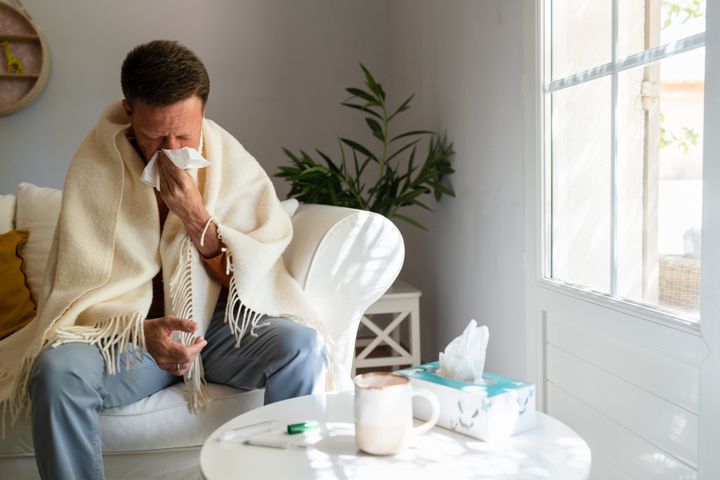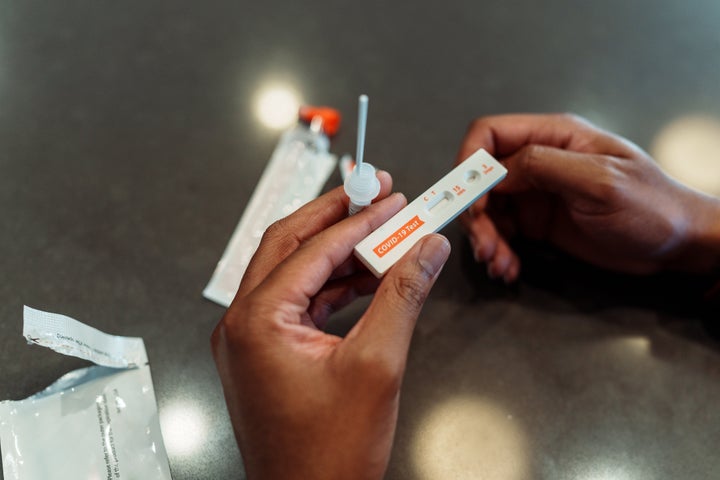
We’re still very much in the throes of winter ― and that means we’re still dealing with lots of respiratory viruses. This includes COVID.
Overall, COVID cases “are down a little bit in most places ... we were, from a hospital admission standpoint, they were probably around 35,000 a week a month ago and now it’s closer to probably 20,000 admissions a week,” said Dr. Thomas Holland, an associate professor of infectious diseases at Duke University School of Medicine in North Carolina, adding that we did not have the huge uptick in cases that occurred two years ago with the initial omicron surge.
“So, we’ve had a definite uptick, or winter COVID season that hopefully is waning now,” Holland said. But he noted that it’s hard to predict what COVID will do, making it important to understand the signs of an infection.
Below, experts share the first signs of a COVID-19 infection and what to do if you come down symptoms:
The early signs of a COVID infection can include headache or fatigue.
“COVID can most commonly present like most other upper respiratory tract infections at this point,” Holland said, meaning that it’s hard to tell the difference between COVID, the flu or RSV without taking a COVID test.
“Really, the symptoms haven’t changed too much variant to variant ... it just kind of varies [from] person to person,” explained Dr. S. Wesley Long, the medical director of diagnostic microbiology at Houston Methodist Hospital.
For a lot of folks, the first symptoms will be a headache or fatigue, according to Holland. But those can be in combination with a host of other symptoms, too.
“The symptoms are still going to be that of really any respiratory virus, so it could be a sore throat, it could start with nasal congestion and cough, fever —any sort of constellation of those sorts of symptoms,” Long said.

Testing is still an effective way to see if you have COVID.
“It’s important to test ... we have medications to treat flu, we have medications to treat COVID [and] they’re different, one won’t work on the other. And none of those medications will work for the common cold,” Long said. This way, you’ll know if you’re eligible for certain medications, which is especially important for those who are high-risk, he added.
There are rumours out there that the current COVID tests don’t pick up the circulating COVID variants, but both experts told HuffPost that isn’t true.
“The COVID tests are all targeted against parts of the virus that don’t tend to change variant to variant, so our COVID tests are doing a really great job of picking up the current variant,” Long said.
But it’s important to take a negative test with a grain of salt.
“There’s some evidence that people are more likely to test positive or more likely to reach their maximum viral shedding ... a little bit later than earlier in the pandemic,” Holland said, “The counselling for years with COVID was that you were maximally infectious ... right around the time that you develop symptoms, and that’s probably pushed back a little bit later to a day or two or three days after onset of symptoms, probably because most of us have some immunity to COVID at this point, either from vaccination or viral infection, or both.”
So, it’s not unheard of to test negative when you first come down with symptoms and then positive a few days later, making it crucial to do repeat testing if you test negative but feel sick.
To avoid getting sick, get vaccinated and take additional precautions.
To keep yourself from getting severely ill from COVID-19, it’s important to stay up-to-date on your vaccinations.
“The most recent updated vaccination didn’t get a lot of real uptake in the community, so there’s really a lot of people that are still eligible for that vaccine,” Long said.
COVID vaccines are available at pharmacies and other locations throughout the country. Beyond vaccination, the strategies we’ve used for the past four years still work today.
“If you’re traveling or out in crowded public places [and] if you really want to avoid getting COVID, it helps to wear a mask — it’ll help [you] avoid other respiratory viruses as well,” Long said.
And, if you do end up getting sick, there are things you can do to help yourself and your loved ones.
“For people who do develop symptoms, whether you test positive for COVID or not, if you have some sort of respiratory virus you can certainly protect the people around you both by testing to find out what you have and then by wearing a mask ... and isolating,” Holland said.
The ways to keep yourself healthy and also deal with a COVID infection have not changed since the start of the pandemic. Plus, knowing what symptoms may be the first signs of illness can only help you get better faster and keep your loved ones healthy.